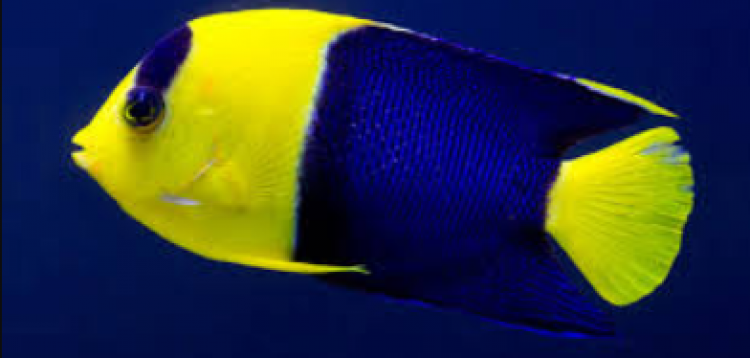- Name:
Half Black Angelfish
(View AKA's) - Family: Pomacanthidae
- Species: Angel Dwarf
- Scientific Name: Centropyge vroliki


General info about Half Black Angelfish
The Half Black Angelfish, like its name, it is half black and half pearled in coloration. The Half Black Angelfish should be the only dwarf angelfish in the tank. It is not a good reef dweller and may eat soft coral polyps, clam mantles, and zoanthids.
Half Black Angelfish Diet & Nutrition
Half Black angelfish are known to feed on a varied diet of algae and crustaceans in the wild. In captivity, its diet should include Spirulina, marine algae, mysis shrimp, and food preparation containing sponge and algae.
Determining Sex of Half Black Angelfish
Just like other Centropyge species, Half Black Angelfish are unsexed at the start of their life and differentiate into female adults. The bigger sized individual within the group will change to become a male. Sex reversal is possible when the need arises.
Breeding & Spawning Half Black Angelfish
Half Black angelfish are well known to cross breeding with both the Eibli and Lemonpeel angelfish to create some interesting hybrid colorations. They are also observed to follow facultative and social monogamy, and distinctly pair with each other.
Common Diseases with Half Black Angelfish
Half Black angelfish may be easily affected by the common bacterial and parasitic diseases when optimal tank conditions are not met and mishandling occurs. Parasitic diseases such as White Spot Disease (Cryptocaryon irritans) or also known as Crypt, and Velvet Disease (Oodinium occelatum) which is a parasitic skin flagellate may cause lesions on the fish's skin. Bacterial infection from the Vibrio bacteria, as a result of parasites, may also lead into Dropsy, Popeye, Bleeding or Red Streaks on the skin and can kill the fish within two days.
Half Black Angelfish Origin
Centropyge vroliki originates from the West Pacific region. Species distribution ranges from Christmas Island in the eastern Indian Ocean and Bali to the Marshall Islands and Vanuatu, north to southern Japan, south to Lord Howe Island and in the Tonga Reefs.
Caution with Half Black Angelfish
Caution should be done when adding Half Black angels in reef tanks as they are known to nip on hard and soft coral polyps, clam mantles, and zoanthids.
Socially, Half Black Angelfish are generally peaceful fish but will often quarrel with members of their own species and even genus if they look similar enough. When housed with larger or more aggressive fish, they are often passive and peaceful. However, they may be bullied by such fish so careful observations must be done.
Acclimating Half Black Angelfish
Acclimation of Half Black angels usually takes 30 minutes or more provided that they are kept in tanks with plenty of hiding places and crevices such as live rocks.
Original Detail
| Name | Species | Family | Scientific Name | More Detail | Added by |
|---|---|---|---|---|---|
| Half Black Angelfish | Angel Dwarf | Pomacanthidae | Centropyge vroliki | The Half Black Angelfish, like its name, it is half black and half pearled in coloration. The Half Black Angelfish should be the only dwarf angelfish in the tank. It is not a good reef dweller and may eat soft coral polyps, clam mantles, and zoanthids. |
Admin |
Changed by users
| Submitted Date | Submitted By | Status | Action |
|---|




